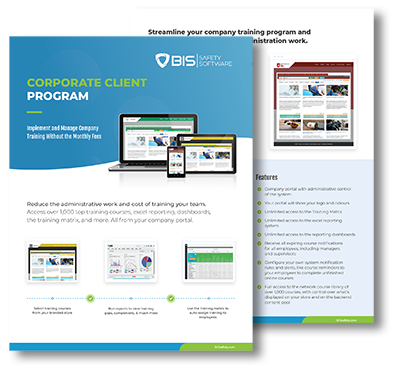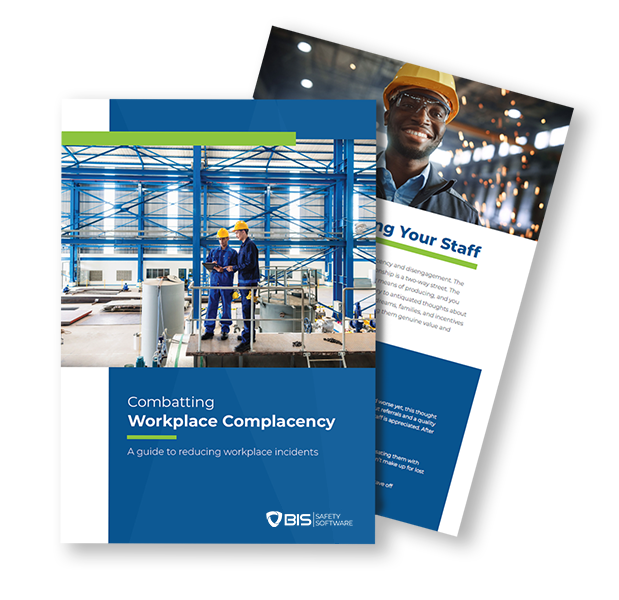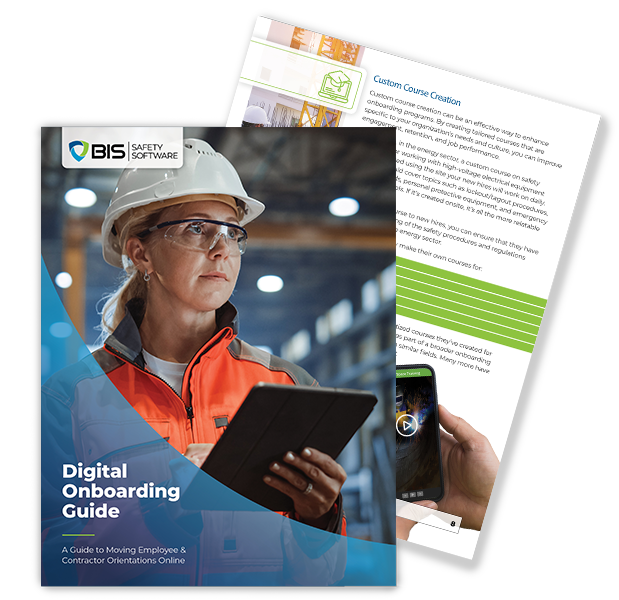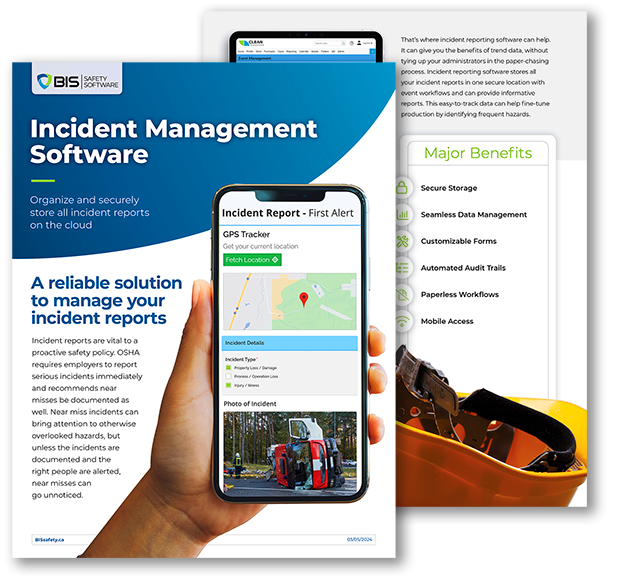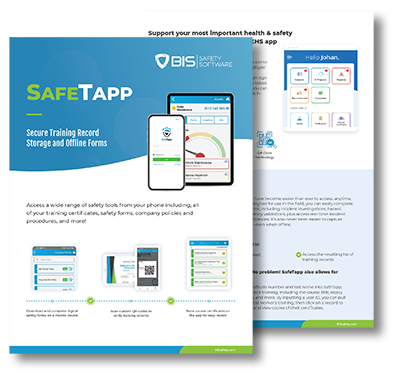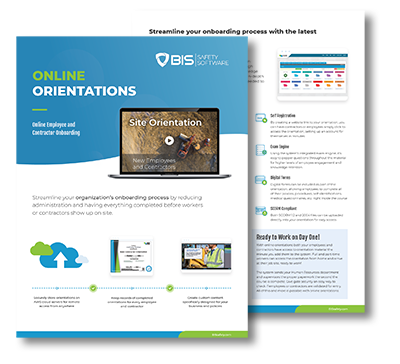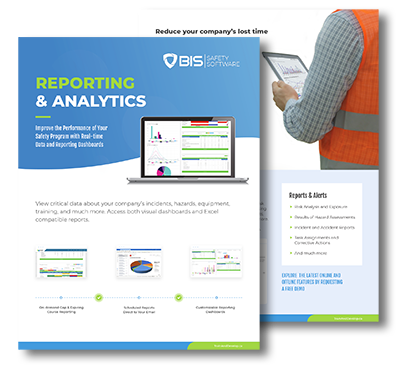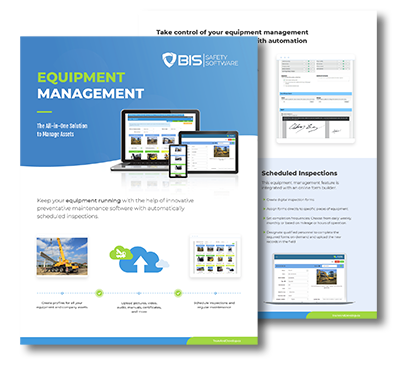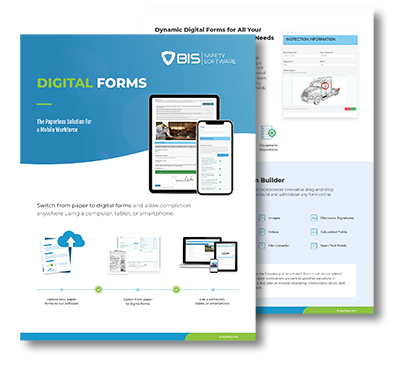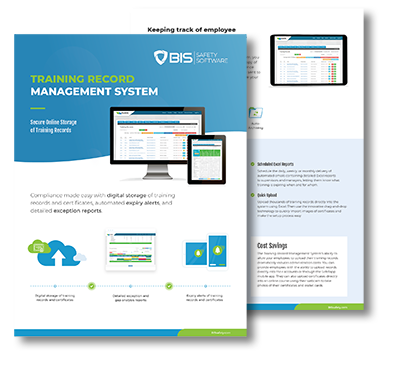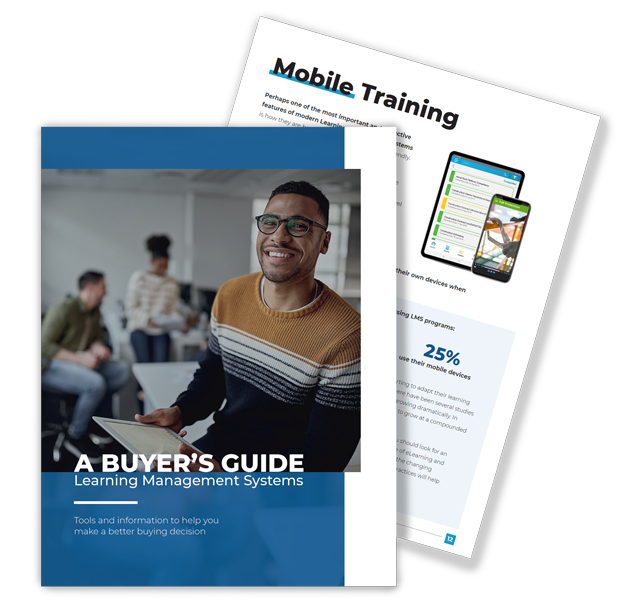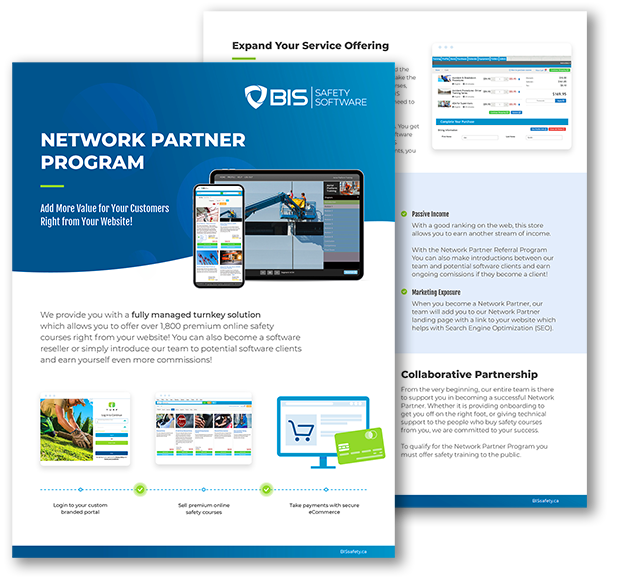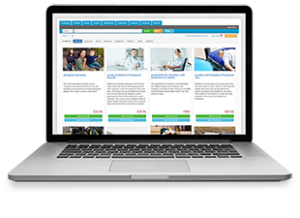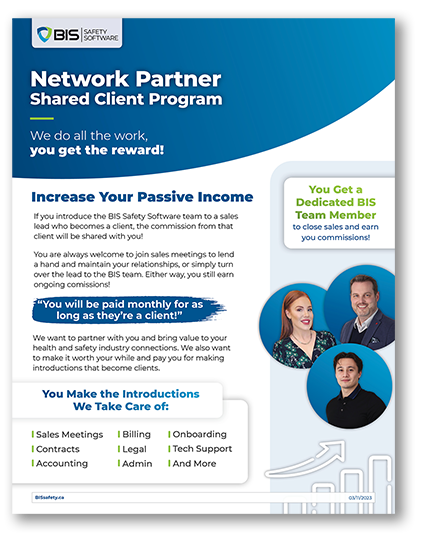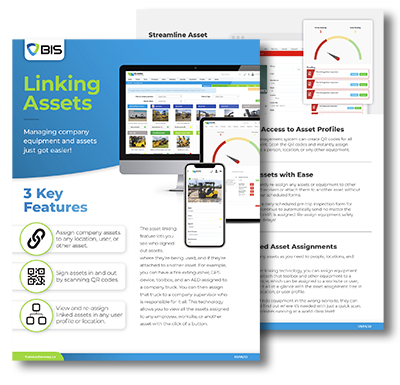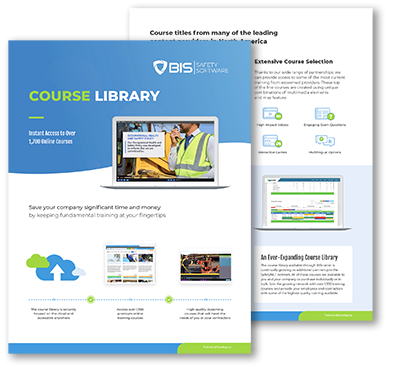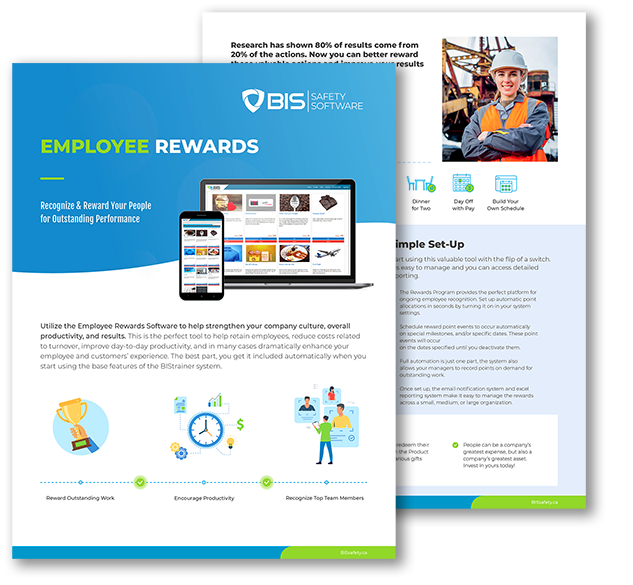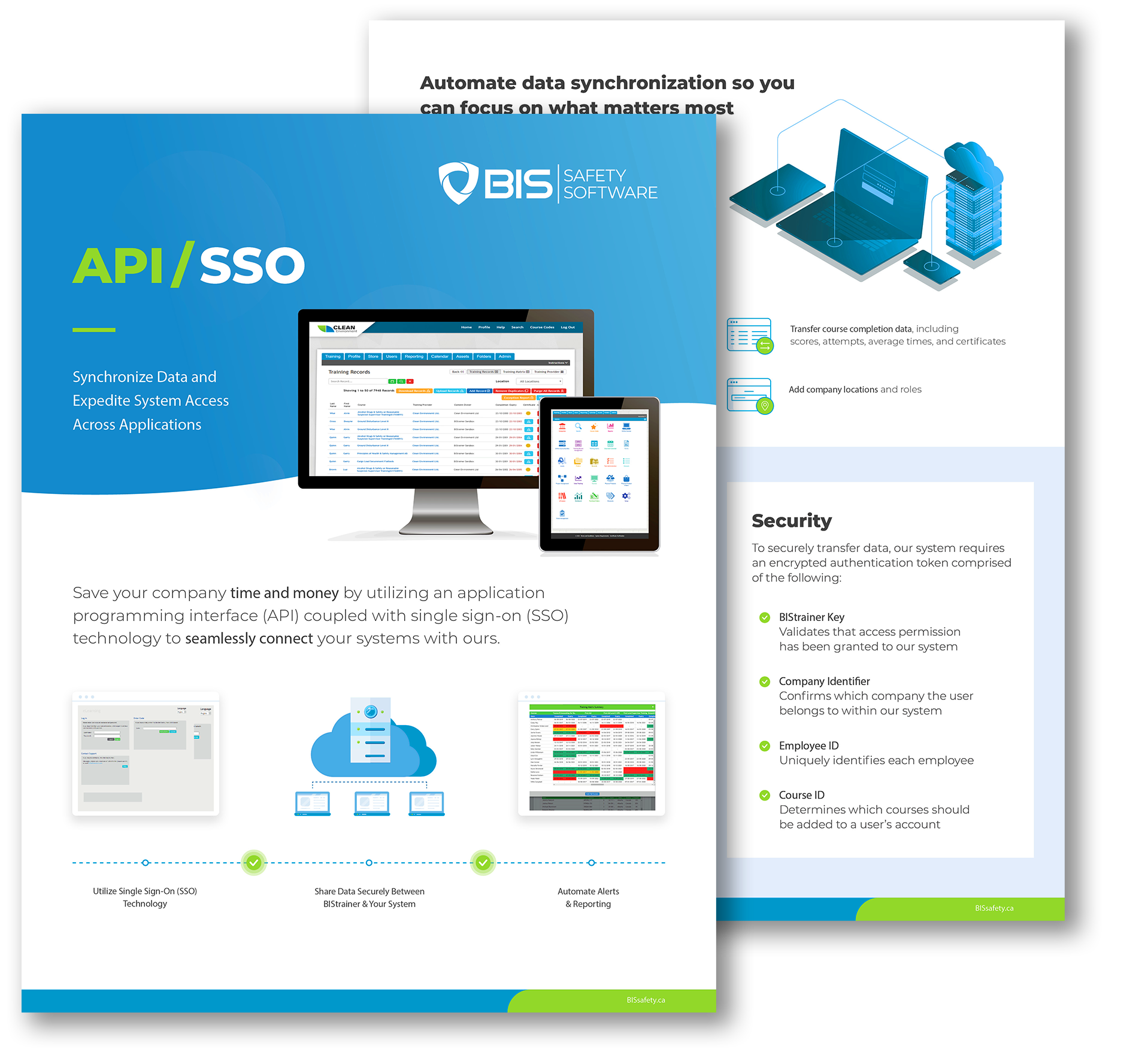The Safety Metrics That Matter

Home The Safety Metrics That Matter How to Track and Improve Workplace Safety Lorem ipsum dolor sit amet, consectetur adipiscing elit. Ut elit tellus, luctus nec ullamcorper mattis, pulvinar dapibus leo. March 4, 2025 By Shilpa Sharma Safety in the workplace isn’t just a box to check—it’s a strategy that impacts productivity, morale, and compliance. But how do you know if your safety efforts are truly working? Tracking the right metrics provides the clarity needed to assess your current programs, identify risks, and drive continuous improvement. Metrics are more than numbers—they’re a window into your organization’s strengths and weaknesses. The right data shows what’s working, where gaps exist, and how to make real progress. This guide explores the key safety metrics every organization should track, why they matter, and how they can build a stronger, safer culture. Why Metrics Are Essential for Safety Management It’s easy to assume that safety efforts are effective simply because there hasn’t been a recent incident. But this reactive mindset leaves organizations vulnerable. Metrics allow you to move beyond assumptions and take a proactive approach. Here’s why tracking safety metrics is critical: Identify Trends: Metrics uncover patterns in incidents, near-misses, and compliance gaps, providing actionable insights. Set Priorities: Clear data highlights where to focus your efforts,whether it’s a particular department, process, or hazard. Measure Success: Safety initiatives need measurable goals. Metrics show whether you’re meeting them or need to adjust. Improve Accountability: Transparent data ensures everyone, from frontline workers to executives, understands their role in improving safety. Safety metrics turn vague objectives like “reduce accidents” into specific, trackable actions. They’re the foundation of a safety program that delivers real results. Key Takeaways Lorem Ipsum is simply dummy text of the printing and typesetting industry. Lorem Ipsum has been the industry’s standard dummy text ever since the 1500s, when an unknown printer took a galley of type and scrambled it to make a type specimen book. It has survived not only five centuries, but also Lorem Ipsum is simply dummy text of the printing and typesetting industry. Lorem Ipsum has been the industry’s standard dummy text ever since the 1500s, when an unknown printer took a galley of type and scrambled it to make a type specimen book. It has survived not only five centuries, but also Lorem Ipsum is simply dummy text of the printing and typesetting industry. Lorem Ipsum has been the industry’s standard dummy text ever since the 1500s, when an unknown printer took a galley of type and scrambled it to make a type specimen book. It has survived not only five centuries, but also Lorem Ipsum is simply dummy text of the printing and typesetting industry. Lorem Ipsum has been the industry’s standard dummy text ever since the 1500s, when an unknown printer took a galley of type and scrambled it to make a type specimen book. It has survived not only five centuries, but also The Safety Metrics That Matter Most Tracking safety data can feel overwhelming, especially with so many variables at play. To make the process manageable, focus on these key metrics that provide the most insight into your workplace safety efforts: 1. Incident Rates: The Safety Baseline What It Measures: The number of workplace injuries or illnesses over a specific period, often calculated per 100 full-time employees. Why It Matters: Incident rates are a critical measure of workplacesafety. A high rate signals systemic issues, while a declining rateindicates progress. How to Track: Calculate Total Recordable Incident Rate (TRIR) andcompare it against industry benchmarks. Break the data down further bydepartment or job role to identify problem areas. Example in Action: A manufacturing company notices its TRIR is higher than the industry average. By analyzing incident reports, they discover most injuries occur during equipment maintenance. This insight leads to additional training and updated safety protocols, reducing incidents over time. 2. Near-Miss Reports: Catching Problems Early What It Measures: Situations where an accident was narrowly avoided, such as a worker tripping over an unsecured cable but notfalling. Why It Matters: Near-misses provide critical warnings about potential hazards. They’re opportunities to fix problems before theycause harm. How to Track: Implement an easy-to-use reporting system and actively encourage workers to log near-misses. Track trends to pinpointrecurring risks. Example in Action: A manufacturing company notices its TRIR is higher than the industry average. By analyzing incident reports, they discover most injuries occur during equipment maintenance. This insight leads to additional training and updated safety protocols, reducing incidents over time. 3. Compliance Scores: Staying Ahead of Regulations What It Measures: How well your organization meets regulatory safety standards and internal policies Why It Matters: Falling out of compliance can lead to hefty fines, reputational damage, and operational delays. High compliance scoresindicate your processes are robust and up-to-date. How to Track: Conduct regular audits, inspections, and reviews of safety documentation. Use safety management software to streamlinecompliance tracking. Example in Action: During a routine audit, a logistics company identifies gaps in their chemical storage compliance. By updating training and implementing automated alerts for inspections, they prevent violations and maintain their safety record. 4. Training Participation and Completion: Building a Prepared Workforce What It Measures: The percentage of employees who have completed required safety training, as well as refresher courses. Why It Matters: Training ensures workers have the knowledge and skills to handle risks effectively. Low participation rates can indicategaps in your safety program. How to Track: Monitor training attendance and completion rates using a learning management system (LMS). Analyze data by team ordepartment to identify weak spots. Example in Action: : A healthcare provider notices low completion rates for fire safety training among night-shift staff. They adjust training schedules to accommodate night workers, increasing compliance and preparedness. Related read: Do you own a business in the insurance industry? Check out how Artificial Intelligence is transforming the insurance industry. 5. Safety Observations: Proactive Risk Management What It Measures: Observations conducted by managers or safety teams to evaluate workplace conditions and behaviors. Why It Matters: : Regular
The Seven Deadly Sins

Home The Seven Deadly Sins That Destroy Safety Culture Lorem ipsum dolor sit amet, consectetur adipiscing elit. Ut elit tellus, luctus nec ullamcorper mattis, pulvinar dapibus leo. February 28, 2025 By Divyanshu Jain Even the strongest safety cultures can be dismantled by a few key missteps. These are the seven deadly sins that can erode safety standards, diminish trust, and put lives at risk. Understanding them is the first step in preventing their destructive impact. 1. Double Standards: One Rule for Some, Another for Others One of the fastest ways to destroy a safety culture is to enforce rules inconsistently. If leadership disregards safety policies while expecting employees to follow them, resentment and noncompliance will spread. Occupational Health and Safety Officer Ted Lane recalls, “I’ve seen situations where the sign on the shop door says ‘Safety glasses must be worn,’ but the boss walks in without them. If leadership doesn’t follow the rules, don’t expect anyone else to.” 2. Top-Down Directives Without Worker Input Safety policies that are dictated from the top down—without input from frontline workers—often fail. Employees who aren’t consulted see policies as bureaucratic red tape rather than measures designed to protect them. Sharon Cole, an OHS Consultant, advises, “If you’re writing a safety policy, involve the workers it will affect. They’re the ones on the frontlines, and their input makes policies practical and enforceable.” 3. Tolerating Negative Attitudes Toward Safety A single bad attitude can spread like wildfire. Workers who scoff at safety meetings, dismiss concerns, or ignore protocols undermine the organization’s culture. If their behavior is left unchecked, it signals that safety isn’t truly a priority. Ted Lane emphasizes, “Zero tolerance for bad safety performance is crucial. Whether it’s the boss’s son or your most experienced worker, if they refuse to comply with safety rules, they need to go.” Key Takeaways Lorem Ipsum is simply dummy text of the printing and typesetting industry. Lorem Ipsum has been the industry’s standard dummy text ever since the 1500s, when an unknown printer took a galley of type and scrambled it to make a type specimen book. It has survived not only five centuries, but also Lorem Ipsum is simply dummy text of the printing and typesetting industry. Lorem Ipsum has been the industry’s standard dummy text ever since the 1500s, when an unknown printer took a galley of type and scrambled it to make a type specimen book. It has survived not only five centuries, but also Lorem Ipsum is simply dummy text of the printing and typesetting industry. Lorem Ipsum has been the industry’s standard dummy text ever since the 1500s, when an unknown printer took a galley of type and scrambled it to make a type specimen book. It has survived not only five centuries, but also Lorem Ipsum is simply dummy text of the printing and typesetting industry. Lorem Ipsum has been the industry’s standard dummy text ever since the 1500s, when an unknown printer took a galley of type and scrambled it to make a type specimen book. It has survived not only five centuries, but also 4. Shifting Priorities: Safety Takes a Back Seat Many companies claim safety is their top priority—until deadlines or costs are at stake. When safety is sacrificed for productivity, employees receive a clear message: safety only matters when it’s convenient. This erodes trust and encourages unsafe behaviors. 5. Failing to Lead by Example When supervisors and executives fail to embody the safety standards they expect from employees, it weakens the entire culture. A strong safety culture starts at the top and trickles down. Patrick Cantner, HSE Director of Willbros Canada, warns, “If you say, ‘Production done in the absence of safety will not be valued or rewarded,’ but then allow it to happen, you’ll destroy your safety culture.” 6. Punishing Workers for Reporting Issues If employees who report unsafe conditions or incidents are reprimanded instead of supported, they will stop coming forward. A culture of fear leads to underreporting, which increases risk. Marcia Minto, an OH&S Program Manager, states, “If someone reports an issue and is yelled at by management, they won’t come forward next time. Employees need to feel empowered, not afraid.” 7. Complacency: The Silent Killer Organizations that have gone a long time without an incident often become overconfident. Safety policies become lax, assumptions replace vigilance, and standards begin to slip. Over time, this complacency spreads, erasing years of hard work in building a safety culture. The moment an organization assumes it has ‘solved’ safety, it has already taken a step backward. Related read: Do you own a business in the insurance industry? Check out how Artificial Intelligence is transforming the insurance industry. Preventing the Seven Deadly Sins To maintain a strong safety culture, organizations must actively identify and counter these pitfalls. Leaders must lead by example, workers must feel empowered to participate, and safety must be a genuine, unwavering priority. The key takeaway? Building a safety culture is difficult, but destroying one is easy. Organizations must remain vigilant to ensure safety is not just a policy, but a deeply ingrained part of workplace operations. BIS Social Media Follow BIS Safety Software for industry-leading safety updates, training solutions, and more. Hover over each icon for quick access to follow, share, or explore our other channels. Frequently Asked Questions Have question in mind? We are here to answer. If you don’t see your question here, drop us a line at our contact page. Lorem Ipsum is simply dummy text of the printing and typesetting industry? Lorem ipsum dolor sit amet, consectetur adipiscing elit. Ut elit tellus, luctus nec ullamcorper mattis, pulvinar dapibus leo. Lorem Ipsum is simply dummy text of the printing and typesetting industry? Lorem ipsum dolor sit amet, consectetur adipiscing elit. Ut elit tellus, luctus nec ullamcorper mattis, pulvinar dapibus leo. Lorem Ipsum is simply dummy text of the printing and typesetting industry? Lorem ipsum dolor sit amet, consectetur adipiscing elit. Ut elit tellus, luctus nec ullamcorper mattis, pulvinar dapibus leo. Lorem Ipsum is
Building a Strong Safety Culture

Home Building a Strong Safety Culture 10 Practical Strategies Lorem ipsum dolor sit amet, consectetur adipiscing elit. Ut elit tellus, luctus nec ullamcorper mattis, pulvinar dapibus leo. February 28, 2025 By Divyanshu Jain Creating a strong safety culture takes effort, but the rewards—fewer injuries, lower costs, and a more engaged workforce—are well worth it. Organizations that successfully build a culture of safety don’t just reduce accidents; they improve morale, efficiency, and even profitability. Here are ten essential strategies to strengthen workplace safety: 1. Be Willing to Make Sacrifices Transforming a weak safety culture into a strong one isn’t always easy. It requires hard decisions and, in some cases, a willingness to part ways with employees who refuse to comply. Ted Lane, an Occupational Health and Safety Officer, recalls a major Alberta construction company that implemented a zero-tolerance safety policy. Initially, they lost workers who resisted the new approach, but within a few years, they rebuilt with employees who valued safety. The result? A safer, more efficient, and ultimately more profitable company. 2. Engage Employees in Safety Decisions Many safety policies fail because they are imposed without input from the employees they affect. Workers on the frontlines know the risks better than anyone else, so including them in safety discussions leads to more practical, effective solutions. “We promote the guys to do some of the things in their own way,” says Darryl Chipman, Director for CASCA. “Recently, a worker suggested using pictures instead of a long written form for safety reports. It made things easier, faster, and more effective.” 3. Encourage Candor and Open Communication Employees need to feel safe speaking up about unsafe conditions or behaviors. In organizations with strong safety cultures, workers are encouraged—not punished— for raising concerns. Ted Lane has a unique way of testing this: “I’ll walk into a site missing a piece of safety gear. If a worker stops me and says, ‘Hey, get that fixed,’ I know that company’s culture is working.” Key Takeaways Lorem Ipsum is simply dummy text of the printing and typesetting industry. Lorem Ipsum has been the industry’s standard dummy text ever since the 1500s, when an unknown printer took a galley of type and scrambled it to make a type specimen book. It has survived not only five centuries, but also Lorem Ipsum is simply dummy text of the printing and typesetting industry. Lorem Ipsum has been the industry’s standard dummy text ever since the 1500s, when an unknown printer took a galley of type and scrambled it to make a type specimen book. It has survived not only five centuries, but also Lorem Ipsum is simply dummy text of the printing and typesetting industry. Lorem Ipsum has been the industry’s standard dummy text ever since the 1500s, when an unknown printer took a galley of type and scrambled it to make a type specimen book. It has survived not only five centuries, but also Lorem Ipsum is simply dummy text of the printing and typesetting industry. Lorem Ipsum has been the industry’s standard dummy text ever since the 1500s, when an unknown printer took a galley of type and scrambled it to make a type specimen book. It has survived not only five centuries, but also 4. Lead by Example Leadership must consistently demonstrate their commitment to safety. When managers follow safety protocols, employees are far more likely to do the same. Patrick Cantner, HSE Director of Willbros Canada, advises, “If you say safety comes first, but then reward employees who cut corners to meet deadlines, your safety culture will collapse.” 5. Promote Transparency An open approach to safety builds trust and accountability. Some companies publicly share their safety records and improvement efforts to reinforce the importance of workplace safety. Kinder Morgan sets a high standard by posting safety reports—including injury rates and incidents—on its public website. This level of transparency keeps employees and leadership accountable. 6. Empower Employees to Act Workers must feel confident in stopping unsafe work without fear of retaliation. When employees know they have the authority to halt operations for safety concerns, they become active participants in maintaining a secure workplace. “Our control center operators don’t need approval to shut down a pipeline if they feel there’s an unsafe condition,” says Dan Carter, Director of the Central Region & Control Centre for Kinder Morgan. “That’s built into our procedures.” 7. Make Safety Personal People are more likely to follow safety procedures if they understand the personal impact. Sharon Cole, OHS Consultant for Alberta Gaming and Liquor Corporation, changed a skeptical worker’s attitude by asking him to imagine how he’d feel if his best friend got hurt on the job because he didn’t speak up. That moment of personal connection turned him into one of the most safety-conscious employees on the site. Related read: Do you own a business in the insurance industry? Check out how Artificial Intelligence is transforming the insurance industry. 8. Keep Safety Communication Frequent Safety isn’t a one-time conversation—it’s an ongoing discussion. Monthly safety updates, toolbox talks, and bulletin boards help reinforce key messages. Adam Czarnecki, Human Resource Manager for Great West Kenworth, recommends using statistics to keep employees engaged: “Send out reports on injury trends. Show workers the progress being made.” 9. Recognize and Reward Safe Behavior Positive reinforcement plays a critical role in fostering safety. However, rewards should focus on long-term commitment rather than quick incentives that might encourage underreporting of incidents. Chipman explains, “We offer training and career advancement to employees who prioritize safety. When new safety positions open, we promote from within.” 10. Start With Yourself Safety culture begins with individuals taking personal responsibility. It’s easy to point fingers at management or coworkers, but real change starts when every employee commits to prioritizing safety in their own work. The Real Bottom Line When safety is embedded in an organization’s culture, it doesn’t just prevent accidents—it improves efficiency, morale, and trust. Strong safety cultures don’t develop overnight, but with commitment, consistency, and leadership, they become an essential part
Rescue 7

Home Rescue 7 A BIS Authorized Partner Lorem ipsum dolor sit amet, consectetur adipiscing elit. Ut elit tellus, luctus nec ullamcorper mattis, pulvinar dapibus leo. February 26, 2025 By Luke Hillenbrand A Leader in Workplace First Aid For over two decades, Rescue 7 has been at the forefront of workplace first aid training in Canada. Founded in 1998 by Toronto firefighter John Collie, the company has grown from a home-based operation to a nationally recognized training provider, equipping thousands of employees with the skills and confidence to respond in emergency situations. ————————————————————————— “We want to give people the tools and confidence to help in real-life situations. That’s what we’re here for.” Michele McCabe General Manager ————————————————————————— Tailored Training Across Canada Key Takeaways Lorem Ipsum is simply dummy text of the printing and typesetting industry. Lorem Ipsum has been the industry’s standard dummy text ever since the 1500s, when an unknown printer took a galley of type and scrambled it to make a type specimen book. It has survived not only five centuries, but also Lorem Ipsum is simply dummy text of the printing and typesetting industry. Lorem Ipsum has been the industry’s standard dummy text ever since the 1500s, when an unknown printer took a galley of type and scrambled it to make a type specimen book. It has survived not only five centuries, but also Lorem Ipsum is simply dummy text of the printing and typesetting industry. Lorem Ipsum has been the industry’s standard dummy text ever since the 1500s, when an unknown printer took a galley of type and scrambled it to make a type specimen book. It has survived not only five centuries, but also Lorem Ipsum is simply dummy text of the printing and typesetting industry. Lorem Ipsum has been the industry’s standard dummy text ever since the 1500s, when an unknown printer took a galley of type and scrambled it to make a type specimen book. It has survived not only five centuries, but also Rescue 7 delivers high-quality, industry-specific training using a combination of instructor-led sessions and blended learning models. Their programs are certified nationwide (except in Quebec, which has a separate regulatory framework) and cater to a wide range of industries, from corporate offices to hazardous work environments. Unlike some international training models that allow fully online certification, Canada requires hands-on instruction. Rescue 7’s expert trainers—who are all active or retired first responders—ensure that participants receive real-world, practical experience that prepares them to act in critical situations. As Michele McCabe explains: ————————————————————————— “In the States and other countries, you can do workplace first aid online. But in Canada, you have to actually learn how to do first aid—how to bandage someone, how to do CPR. It’s not just theoretical.” ————————————————————————— Primary List of Services Blended First Aid Training CPR and AED Certification Workplace Emergency Response Planning First Aid Compliance Training Automated External Defibrillator (AED) Solutions Naloxone & Overdose Response Training Rescue 7 combines expert-led instruction with BIS Safety Software’s digital solutions to deliver accessible, industry-leading safety training across Canada. Proud to Partner with Rescue 7 Through their partnership with BIS Safety Software, Rescue 7 enhances workplace first aid training by integrating blended learning solutions with cutting-edge digital tools. The BIS platform enables seamless course management, reporting, and compliance tracking, making it easier for organizations to certify employees in CPR, AED use, and emergency response. This collaboration ensures that businesses across Canada have access to high-quality, accessible, and regulatory-compliant first aid training. Related read: Do you own a business in the insurance industry? Check out how Artificial Intelligence is transforming the insurance industry. Partnership with BIS Safety Software Rescue 7’s partnership with BIS Safety Software began over a decade ago, playing a pivotal role in the adoption of blended first aid training across Canada. The BIS platform has been instrumental in streamlining course management, reporting, and compliance tracking, making it easier for Rescue 7 to manage large-scale training programs. ————————————————————————— “BIS has been with us from the start. Their system is user-friendly, and the customer service has always been fantastic.” Michele McCabe General Manager ————————————————————————— Rescue 7 works with several governing bodies and uses the BIS platform to track training progress, grant access to reports, and ensure full compliance with industry standards. More about Rescue 7 What Sets Rescue 7 Apart? Expert Trainers: Unlike general educators, Rescue 7’s instructors are paramedics, firefighters, nurses, and doctors with hands-on experience in life-saving situations. Industry-Specific Training: Their courses are tailored for various workplaces, ensuring that hydro workers, police officers, security guards, and other professionals receive relevant, scenario-based instruction. Nationwide Reach: With training locations coast to coast, Rescue 7 serves major corporations, government agencies, and regulated industries. Expanding Beyond Training: AEDs & Emergency Beyond first aid education, Rescue 7 is also one of Canada’s largest distributors of Automated External Defibrillators (AEDs). As an exclusive dealer of Stryker Medical’s AED units (HeartSine and CR2 models), they provide training, maintenance, and inspections for life-saving devices in workplaces across the country. In addition, Rescue 7 is expanding its services to include naloxone kit distribution, reinforcing its commitment to emergency medical preparedness. Looking Ahead: The Future of Rescue 7 Rescue 7 continues to drive innovation in first aid training, with plans to: Expand instructor networks into remote and underserved areas. Support standardization efforts with the Canadian Safety Association (CSA) to unify first aid training across all provinces. Explore virtual first aid training if regulatory changes allow for it, leveraging BIS Safety Software for seamless implementation. BIS Social Media Follow BIS Safety Software for industry-leading safety updates, training solutions, and more. Hover over each icon for quick access to follow, share, or explore our other channels. Frequently Asked Questions Have question in mind? We are here to answer. If you don’t see your question here, drop us a line at our contact page. Lorem Ipsum is simply dummy text of the printing and typesetting industry? Lorem ipsum dolor sit amet, consectetur adipiscing elit. Ut elit tellus, luctus nec ullamcorper mattis, pulvinar dapibus leo.
NRCA
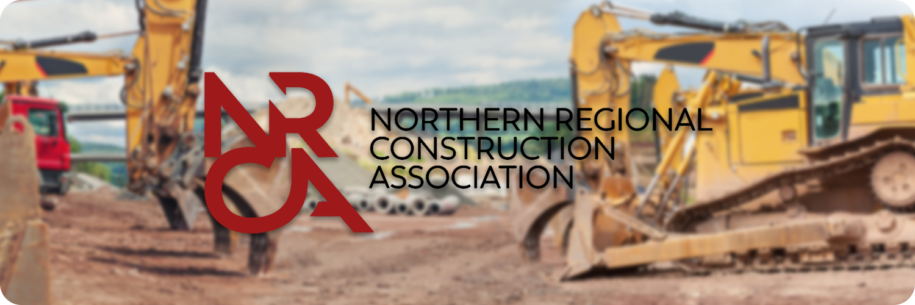
Home NRCA A BIS Authorized Partner Lorem ipsum dolor sit amet, consectetur adipiscing elit. Ut elit tellus, luctus nec ullamcorper mattis, pulvinar dapibus leo. February 26, 2025 By Luca Shillabeer The Northern Regional Construction Association (NRCA) is an industrial, commercial, and institutional sector association serving 120 members across northern British Columbia. As a key advocate for the construction industry in the region, NRCA provides education, training, and support to ensure that its members can build safer and more efficiently. One of NRCA’s primary pillars is education, which is why the association has prioritized partnerships with organizations like BIS Safety Software. ————————————————————————— “One of our big pillars is education, and partnering with BIS allows us to provide members with safety courses that are accessible when they need them.” Kayla Hearn Manager, Operations and Communications ————————————————————————— Strengthening Safety & Industry Growth Founded in the 1960s, NRCA originally served as a community hub, providing plan rooms where members could review construction documents. Over time, the association’s role evolved significantly to include: Education and Training – Offering a range of construction safety courses to meet industry demands. Community Building – Strengthening professional connections and fostering collaboration among members. Advocacy and Support – Ensuring that northern BC’s construction industry has a voice at the provincial level. As the construction landscape changes, NRCA remains committed to adapting alongside its members, helping them stay ahead of industry requirements and best practices. ————————————————————————— ““One of our original purposes was to act as a community hub, and while we still do that, we’ve evolved to focus on educating the community and keeping them building together.“ Kayla Hearn Manager, Operations and Communications ————————————————————————— NRCA is dedicated to uplifting its members and helping them build better. The association operates with a strong regional focus, uniquely serving the needs of construction professionals across northern British Columbia’s vast landscape. Unlike other construction associations in BC, NRCA covers the largest geographical region while being the smallest in membership size. This distinction allows NRCA to provide highly tailored support to its members, ensuring that they receive the resources and training necessary to navigate the specific challenges of northern construction projects. ————————————————————————— “The North is a really specific community on its own, and navigating the challenges that come with that is what sets us apart from other associations across the province” Kayla Hearn Manager, Operations and Communications ————————————————————————— Primary List Of Services Safety Training & Education Industry Advocacy & Support Community Building & Networking Regional Construction Resources Proud To Partner With The NRCA The partnership between the NRCA and BIS Safety Software underscores a shared dedication to workplace safety, education, and industry advancement. By leveraging NRCA’s deep-rooted commitment to supporting construction professionals in northern British Columbia with BIS’s innovative digital training solutions, they are ensuring that workers across remote and urban job sites have seamless access to critical safety education. Together, NRCA and BIS are empowering members with the tools they need to maintain compliance, enhance job site safety, and build a stronger, more resilient workforce. Key Takeaways Lorem Ipsum is simply dummy text of the printing and typesetting industry. Lorem Ipsum has been the industry’s standard dummy text ever since the 1500s, when an unknown printer took a galley of type and scrambled it to make a type specimen book. It has survived not only five centuries, but also Lorem Ipsum is simply dummy text of the printing and typesetting industry. Lorem Ipsum has been the industry’s standard dummy text ever since the 1500s, when an unknown printer took a galley of type and scrambled it to make a type specimen book. It has survived not only five centuries, but also Lorem Ipsum is simply dummy text of the printing and typesetting industry. Lorem Ipsum has been the industry’s standard dummy text ever since the 1500s, when an unknown printer took a galley of type and scrambled it to make a type specimen book. It has survived not only five centuries, but also Lorem Ipsum is simply dummy text of the printing and typesetting industry. Lorem Ipsum has been the industry’s standard dummy text ever since the 1500s, when an unknown printer took a galley of type and scrambled it to make a type specimen book. It has survived not only five centuries, but also Partnership With BIS Safety Software The NRCA has partnered with BIS Safety Software to expand its safety training offerings, making courses more accessible to its members, whether they are working in a city or on a remote job site. The NRCA has significantly expanded its use of BIS’s platform over the past year and plans to continue leveraging its features. ————————————————————————— “We love the service, and we want to keep going ahead with it. It’s something our members can access whether they’re in town or working on a job site,”” Kayla Hearn Manager, Operations and Communications ————————————————————————— Accessibility is a key priority for NRCA, and BIS Safety Software provides an efficient, flexible learning solution that allows members to complete their required safety training on their own schedule. Related read: Do you own a business in the insurance industry? Check out how Artificial Intelligence is transforming the insurance industry. More About The NRCA Serving Northern BC’s Construction Industry The Northern Regional Construction Association (NRCA) supports 120+ members across northern British Columbia, covering the largest geographic region of any construction association in the province. As a dedicated industry advocate, NRCA provides resources, training, and networking opportunities to help members navigate the unique challenges of working in remote and urban construction projects. Committed to Safety & Education Safety training is a core pillar of NRCA, ensuring that construction professionals have access to essential courses that meet industry standards. Through its partnership with BIS Safety Software, NRCA delivers flexible learning solutions, making it easier for workers to stay certified, compliant, and up to date with evolving safety regulations. Strong Community & Industry Advocacy NRCA is more than just a membership association—it is a strong advocate for northern BC’s construction professionals. The organization works closely
Safety Buzz Campus

Home Safety Buzz Campus A BIS Authorized Partner Lorem ipsum dolor sit amet, consectetur adipiscing elit. Ut elit tellus, luctus nec ullamcorper mattis, pulvinar dapibus leo. February 25, 2025 By Luca Shillabeer Safety Buzz Campus, based in Dunmore, Alberta, just outside Medicine Hat, has been a cornerstone of safety education and training for over 20 years. Initially focused on delivering core safety courses, the organization has grown into a multifaceted safety training campus with four distinct departments: Safety Training – Offering in-person, online, and off-site safety courses for various industries. Driver Training School – Providing Class 1 and Class 3 driver training programs as part of their comprehensive campus offerings. Safety Management Services – Developing and maintaining customized safety programs for companies to ensure compliance and foster a safety-first culture. Field Safety Services – Supporting off-site safety needs, including confined space monitoring, safety supervision, and equipment such as air trailers and supplied air systems. This comprehensive approach ensures Safety Buzz Campus meets the diverse safety needs of its clients, whether through education, compliance, or on-the-ground support. Tailored Training Solutions The heart of Safety Buzz Campus lies in safety training. From its inception, the organization has been dedicated to building safety cultures within businesses and communities. Their approach goes beyond merely teaching safety practices—they aim to instill an understanding of the purpose and value behind these practices. This commitment helps clients integrate safety into their workplace culture and personal lives. ————————————————————————— “Bringing a safety culture to companies has always been incredibly important. We don’t just like to teach safety practices, we also like to help people understand the value and purpose of it.” Pamela Kunz Safety Buzz Campus Primary List of Services In-house Fall Protection Training Equipment-Specific Courses Safety Training Driver Training School Safety Management Services Field Safety Services Key Takeaways Lorem Ipsum is simply dummy text of the printing and typesetting industry. Lorem Ipsum has been the industry’s standard dummy text ever since the 1500s, when an unknown printer took a galley of type and scrambled it to make a type specimen book. It has survived not only five centuries, but also Lorem Ipsum is simply dummy text of the printing and typesetting industry. Lorem Ipsum has been the industry’s standard dummy text ever since the 1500s, when an unknown printer took a galley of type and scrambled it to make a type specimen book. It has survived not only five centuries, but also Lorem Ipsum is simply dummy text of the printing and typesetting industry. Lorem Ipsum has been the industry’s standard dummy text ever since the 1500s, when an unknown printer took a galley of type and scrambled it to make a type specimen book. It has survived not only five centuries, but also Lorem Ipsum is simply dummy text of the printing and typesetting industry. Lorem Ipsum has been the industry’s standard dummy text ever since the 1500s, when an unknown printer took a galley of type and scrambled it to make a type specimen book. It has survived not only five centuries, but also Proud to Partner with Safety Buzz Campus The partnership between Safety Buzz Campus and BIS Safety Software showcases a shared commitment to advancing safety education across multiple industries. By combining Safety Buzz Campus’s extensive expertise in hands-on training with BIS Safety Software’s innovative digital solutions, they enhance accessibility and efficiency in safety programs. This collaboration streamlines training management, supports compliance, and empowers businesses to cultivate strong safety cultures within their organizations and communities. Partnership with BIS Safety Software Safety Buzz Campus has been leveraging BIS Safety Software for the past five years to streamline their operations. The scheduler feature is a vital tool they use daily to manage training sessions and resources efficiently. ————————————————————————— “We’ve been using BIS for about 5 years now and, clearly it’s designed for the industry. It’s designed exactly the way we need it… The scheduler is the center of our planning and organization.” Pamela Kunz Safety Buzz Campus ————————————————————————— They’re also exploring additional BIS features, such as document creation and CRM capabilities, to maximize the platform’s potential and integrate their diverse services. Looking ahead, they aim to expand their partnership with BIS by digitizing their in-house courses, creating video-based online programs, and enhancing their e-learning offerings. Related read: Do you own a business in the insurance industry? Check out how Artificial Intelligence is transforming the insurance industry. More about Safety Buzz Campus Community Engagement Safety Buzz Campus is deeply rooted in its community. Beyond their training services, the team actively participates in local events, volunteering for organizations like food banks and music festivals to provide on-site first aid and other support. “We’re not just a business; we’re part of the community. From volunteering at the local food bank to supporting music festivals with first aid services, we’re committed to giving back,” Pamela explained. Their connection to the community strengthens their reputation as a trusted partner in safety education and services. Company Culture Safety Buzz Campus prides itself on fostering a team-oriented and employee-centric culture. The owners prioritize creating a supportive environment where team members can thrive. This internal focus on safety and collaboration ensures they practice what they promote to clients. “We focus on building a strong internal safety culture because we can’t promote what we don’t practice. Our team is solid, and we’re excited about our future growth,” Pamela noted. Industries Served While Safety Buzz Campus has deep roots in oil and gas, they’ve expanded their reach to include construction, agriculture, and even unique clients like golf courses and senior living facilities. Recently, they: Revamped the safety program for a local golf course after a compliance inquiry. Provided safety training for staff at a senior living facility during their annual safety day. Partnered with a local school to deliver agricultural safety training to students in Grades 7-9, tailoring lessons to young learners with a focus on farm safety. These initiatives reflect Safety Buzz Campus’s adaptability and commitment to safety education across a diverse range of industries.
WHMIS 2025
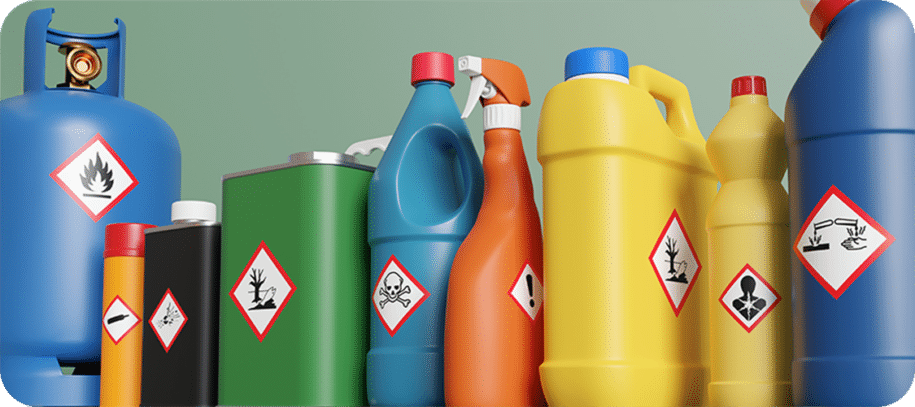
Home WHMIS 2025 Insights from Alex Hollingsworth Lorem ipsum dolor sit amet, consectetur adipiscing elit. Ut elit tellus, luctus nec ullamcorper mattis, pulvinar dapibus leo. January 10, 2025 By Luke Hillenbrand 2025 HPR Amendments Coming into Force So, what are these changes? You can read the full list, but the gist of it is the amendments keep our system aligned with the GHS and clarified points of confusion. Let’s take a closer look at some specifics: WHMIS is called WHMIS again. You don’t need to worry about the headache of having to use WHMIS 2015 in any year that isn’t 2015 for much longer. The new amendments are dropping the 2015—it’s cleaner. Going forward, you’ll hear these former versions of WHMIS referred to at the former HPR and the latest updates as the amended HPR. The name is expected to stay the same even when new amendments roll out. Changes to hazard classes and categories. The class Chemicals Under Pressure has been added to the HPA, and Flammable Aerosols is just called Aerosols (with an added category for non-flammable products). The class Pyrophoric Gases has been repealed and integrated as subcategories under Flammable Gases. Updated requirements for when suppliers become aware of significant new data. This update outlines stricter requirements for what a supplier must do when they become aware of significant new data (or information that changes the understanding of the risks) related to their products. While in the transition grace period to their new SDS/labels, suppliers are now required to prepare written documentation that outlines specific changes to the SDS or label as soon as they’re aware of the new information. Other general updates to classification and documentation. Several amendments have been made to update sections for clarity and accuracy in hazard communication. Again, you can find the full list of amendments here, as provided by Health Canada. But what does this mean? Depending on the work you do, some of these amendments will be more relevant to you than others. However, all workers, employers, and suppliers must be educated on these changes when working with hazardous products. For Employers As an employer, you have several responsibilities related to WHMIS. You must educate and train workers on how to work safely with hazardous materials and provide them with the tools and equipment to do so. The requirements for WHMIS training are set by each province or territory, so it’s important to check what’s required where you live. This could look like providing general education during on-boarding, showing workers the sites of chemical spill clean-up kits and eye wash stations, and demonstrating how to store products safely, among other things. You should also consult with your workplace’s health and safety committee or representative. It’s vital to make sure you’re doing everything to comply with the HPR and HPA. The penalties for non-compliance with WHMIS legislation are severe: Frist offences may result in a fine of up to $250,000 and/or 6 months in prison For second offences, the penalties may be a fine of up to $500,000 and/or 18 months in prison Indictable offences may come with even more severe consequences, including up to $5,000,000 in fines and/or 2 years in prison Enough to make you sweat? WHMIS shouldn’t be scary—really, it’s about clear and consistent communication. If there are lapses in hazard communication, it’s up to you to address the cause of the breakdown. For Workers For workers, it’s up to you to attend WHMIS training and follow the instructions you’ve received, which include wearing your PPE as required. Even after the amended HPR come into force, it’s important to remember WHMIS is ongoing. Taking a course once isn’t enough. Along with general education, you must receive job-specific training related to the products you work with, and training must also happen whenever there are changes to the materials or new conditions in a workplace. Refresher training should also happen on a regular basis to fight the forgetting curve. Key Takeaways Lorem Ipsum is simply dummy text of the printing and typesetting industry. Lorem Ipsum has been the industry’s standard dummy text ever since the 1500s, when an unknown printer took a galley of type and scrambled it to make a type specimen book. It has survived not only five centuries, but also Lorem Ipsum is simply dummy text of the printing and typesetting industry. Lorem Ipsum has been the industry’s standard dummy text ever since the 1500s, when an unknown printer took a galley of type and scrambled it to make a type specimen book. It has survived not only five centuries, but also Lorem Ipsum is simply dummy text of the printing and typesetting industry. Lorem Ipsum has been the industry’s standard dummy text ever since the 1500s, when an unknown printer took a galley of type and scrambled it to make a type specimen book. It has survived not only five centuries, but also Lorem Ipsum is simply dummy text of the printing and typesetting industry. Lorem Ipsum has been the industry’s standard dummy text ever since the 1500s, when an unknown printer took a galley of type and scrambled it to make a type specimen book. It has survived not only five centuries, but also As you can see, it’s important to be educated on the WHMIS amendments, whether you’ve used WHMIS for years or you’re taking it for the first time. In either case, if you find yourself needing a refresher, consider the WHMIS 2025 course from BIS. Overall, the transition to the latest WHMIS updates won’t be as dramatic as the changes were in 2015. This time, most fundamental aspects, like the pictograms, labelling requirements, and information on the SDSs remain the same. However, some products may be reclassified or moved to a new category, and it’s your responsibility to make sure products have the correct labels and SDSs. With just under a year until the deadline to move to the amended HPR, it’s a good time to begin looking at the current
Safety Leadership Takes a Team

Home Safety Leadership Takes a Team Insights from Alex Hollingsworth Lorem ipsum dolor sit amet, consectetur adipiscing elit. Ut elit tellus, luctus nec ullamcorper mattis, pulvinar dapibus leo. December 12, 2024 By Luke Hillenbrand How Alex Hollingsworth Transformed Safety for 20,000 Workers Managing safety across a global workforce is no small feat. For Alex Hollingsworth, former Manager of Group Training and Learning at South32, it was a challenge he approached with innovation, resilience, and a relentless focus on improvement. Over nearly three years, Alex oversaw safety training and learning initiatives for 20,000 individuals, including 10,000 employees and an equal number of contractors, spread across Australia, South Africa, and the Americas.His tenure at South32 built on 16 years at Rio Tinto, where he developed global training strategies and honed his expertise in high-risk industries. Alex’s journey offers valuable insights into the complexities of safety management and the power of digital transformation. Background and Expertise When Alex Hollingsworth joined South32 in 2022 as Manager of Group Training and Learning, he brought with him a wealth of experience in learning and development. His role required navigating the complexities of decentralized operations across Australia, South Africa, and the Americas—regions with vastly different regulatory landscapes, cultural contexts, and operational challenges. ————————————————————————— “It’s about building safety systems together so that everyone involvedcan be proud of the achievement and processes that make safety intuitive and achievable for everyone involved.” Alex Hollingsworth ————————————————————————— In South Africa, Alex faced the challenge of adhering to stringent government legislation policies and training requirements that were unique to the region. Safety regulations were often deeply influenced by local labor laws, and the diversity of languages and cultural expectations added another layer of complexity. “In South Africa, you have to account for a workforce that speaks multiple languages, each with their own nuances, while ensuring compliance with highly specific training requirements,” Alex shared. In Australia, where open-cut mining operations have dominated for decades, the focus for achieving safety performance with the power of digital transformation, was on ensuring seamless integration with legacy processes in a way that brought the workforce along for the journey. Meanwhile, in the Americas, the challenges varied widely depending on whether the project was a well-established site or an emerging greenfield operation. In some areas, Alex’s focus was on building training programs from the ground up, ensuring that safety was embedded into every stage of development. “At South32, I learned that no two regions are the same,” Alex explained. “The key was finding a balance between respecting local differences and maintaining a globally unified approach to safety. It’s about building systems and processes that make safety intuitive and achievable for everyone involved.” This ability to adapt and lead across such diverse landscapes highlights Alex’s exceptional skill in fostering a global safety culture that remains effective no matter the regional challenges. ————————————————————————— “Training isn’t something you set and forget. Every change—from new equipment to organizational structural shifts—requires reassessing and realigning on capability requirements.” Alex Hollingsworth ————————————————————————— Lessons from Rio Tinto: A Foundation for Excellence Before joining South32, Alex Hollingsworth spent 16 years with Rio Tinto, one of the world’s largest and most complex mining operations. During his tenure, Alex rose to the position of Senior Manager of Learning and Development, a role that involved overseeing training initiatives for thousands of workers across the globe. “Rio Tinto’s iron ore network is the largest and most profitable single mining operation in the world,” Alex shared. “Managing training in such a high-stakes environment required setting an effective framework for the deployment of consistent and efficient training solutions balancing global consistency with local flexibility.” To achieve this, Alex led a decentralized training model, where training operational teams partnered with operations tailored execution on identifying specific capability requirements and then delivered through a centralized framework to meet specific and local operations strategy requirements regional needs while adhering to global standards. This approach ensured uniform safety practices while addressing the specific challenges of individual sites, from environmental hazards to cultural and regulatory differences. In managing such complexities, flexible and scalable software applications became indispensable. These tools allowed global companies like Rio Tinto to maintain oversight, ensure compliance, and streamlining of training across diverse regions. Few solutions on the market are capable of managing both the global and local demands of safety and training, making adaptable software an essential part of any safety strategy. Key responsibilities during his time at Rio Tinto included: Developing High-Value Training Strategies:Alex crafted comprehensive strategies to ensure consistency in safety and operational training across multiple continents. Fostering a Culture of Safety:Alex prioritized making safety a shared value across all teams, empowering workers to take ownership of their practices. “Safety isn’t just a policy; it’s a mindset,” Alex explained. His focus on collaboration created a unified approach to safety, strengthening practices across diverse sites. Leading through Change:As new technologies and regulatory frameworks emerged, Alex led initiatives to integrate them into training programs, ensuring Rio Tinto remained at the forefront of safety innovation. ————————————————————————— “Rio Tinto prepared me to think big, act decisively, and never lose sight of the people behind the numbers. That focus on people—ensuring every worker is safe and supported—has been at the core of everything I do.“ Alex Hollingsworth ————————————————————————— This foundation proved invaluable when Alex transitioned to South32, where he applied the lessons learned at Rio Tinto to tackle new challenges in safety management. His ability to navigate complexity, implement large-scale strategies, and foster collaboration positioned him as a transformative leader in the safety training industry. Challenges in Safety Management Imagine managing safety for 20,000 workers, including 10,000 contractors, spread across multiple continents, each with its own set of regulations, environmental challenges, and cultural norms. For Alex Hollingsworth, this was the reality at South32. It was a role that demanded more than just technical expertise—it required innovation, persistence, and the ability to lead through complexity. One of the most pressing challenges Alex faced was the company’s reliance on paper-based processes for managing training and certifications. “We printed 150,000 sheets of paper
NS Safety Alliance: A BIS Authorized Partner

Home NS Safety Alliance: A BIS Authorized Partner That Need to Die Lorem ipsum dolor sit amet, consectetur adipiscing elit. Ut elit tellus, luctus nec ullamcorper mattis, pulvinar dapibus leo. November 28, 2024 By Luke Hillenbrand Founded 14 years ago, the NS Safety Alliance began as a small safety consulting business dedicated to helping organizations navigate the complexities of occupational health and safety legislation. Over time, it has evolved into a trusted partner for businesses across Atlantic Canada, known for its hands-on approach and commitment to creating safer workplaces. The Alliance’s team of experienced advisors goes beyond compliance consulting. They work alongside organizations to identify gaps, implement effective solutions, and ensure that safety practices align with the Occupational Health and Safety Act and regulations. This partnership-driven model fosters long-term relationships and helps clients build a culture of safety that lasts. ————————————————————————— “We’re not just consultants—we’re partners. We walk with our clients every step of the way, helping them identify gaps, implement solutions, and build safer workplaces.” Sherri Bozin Health And Safety Consultant ————————————————————————— Comprehensive Safety Services From providing tailored training solutions for industries like construction and manufacturing to conducting gap analysis and compliance assessments, NS Safety Alliance is committed to addressing the unique safety needs of businesses across Nova Scotia and beyond. Their services include new hire orientation programs, customized training for safety-critical roles, and expert guidance to ensure compliance with workplace safety standards. By focusing on education, compliance, and tailored support, NS Safety Alliance continues to elevate workplace safety and foster a culture of proactive risk management. NS Safety Alliance offers a comprehensive range of services to address the unique needs of various industries. Their key offerings include: Gap Analysis and Compliance Assessments: Identifying risks and non-compliance areas, then developing actionable strategies to address them. Custom Safety Training Solutions: Tailored training programs designed to equip workers with the skills and knowledge needed for a safe work environment. New Hire Orientation Programs: Comprehensive safety awareness training for onboarding employees and instilling a safety-first mindset. As Sherri Bozin, Health And Safety Consultant at NS Safety, explains: ————————————————————————— “The variety of resources available through BIS is incredibly valuable. Sometimes you don’t even realize there’s a tool or training available until you search, and it’s already there. It’s made delivering safety training to our clients so much more seamless and effective.” Sherri Bozin Health And Safety Consultant ————————————————————————— Primary List of Services Gap Analysis and Compliance Planning Tailored Training Programs Safety Awareness and Orientation Programs On-Site Safety Assessments and Audits Industry-Specific Safety Consulting Digital Safety Training via BIS Safety Software Their ability to combine on-site expertise with innovative digital tools ensures a comprehensive approach to safety. Key Takeaways Lorem Ipsum is simply dummy text of the printing and typesetting industry. Lorem Ipsum has been the industry’s standard dummy text ever since the 1500s, when an unknown printer took a galley of type and scrambled it to make a type specimen book. It has survived not only five centuries, but also Lorem Ipsum is simply dummy text of the printing and typesetting industry. Lorem Ipsum has been the industry’s standard dummy text ever since the 1500s, when an unknown printer took a galley of type and scrambled it to make a type specimen book. It has survived not only five centuries, but also Lorem Ipsum is simply dummy text of the printing and typesetting industry. Lorem Ipsum has been the industry’s standard dummy text ever since the 1500s, when an unknown printer took a galley of type and scrambled it to make a type specimen book. It has survived not only five centuries, but also Lorem Ipsum is simply dummy text of the printing and typesetting industry. Lorem Ipsum has been the industry’s standard dummy text ever since the 1500s, when an unknown printer took a galley of type and scrambled it to make a type specimen book. It has survived not only five centuries, but also Proud to Partner with NS Safety Alliance Through their partnership with BIS Safety Software, NS Safety Alliance leverages cutting-edge tools to streamline safety training and compliance. The BIS platform provides them with access to an extensive library of courses, digital management solutions, and customizable safety resources. Partnership with BIS Safety Software Through their partnership with BIS Safety Software, NS Safety Alliance leverages cutting-edge tools to streamline safety training and compliance. The BIS platform provides them with access to an extensive library of courses, digital management solutions, and customizable safety resources. ————————————————————————— “The variety of resources available through BIS is incredibly valuable. Sometimes you don’t even realize there’s a tool or training available until you search, and it’s already there. It’s made delivering safety training to our clients so much more seamless and effective.” Sherri Bozin Health And Safety Consultant ————————————————————————— This collaboration allows NS Safety Alliance to provide their clients with accessible training options, including online, in-person, and hybrid formats. The use of BIS’s scheduler tool simplifies managing client training needs, ensuring seamless coordination across industries. More about NS Safety Alliance Client Reach and Industry Expertise NS Safety Alliance serves a diverse range of industries across Atlantic Canada, including construction, food processing, manufacturing, and more. Their deep understanding of regional regulations and safety standards allows them to deliver tailored solutions that meet the unique needs of each client. Their hands-on, partnership-focused approach ensures long-term success and a culture of safety. Tailored Safety Solutions By customizing training and consulting services, NS Safety Alliance ensures every business receives the support they need. Whether it’s new hire orientations, gap analyses, or compliance planning, they adapt to fit the specific challenges of each industry. Their flexible and client-focused solutions make safety achievable for businesses of all sizes. Dedicated to Building Relationships Guided by their motto, “Relationships Built on Safety,” NS Safety Alliance is committed to fostering long-term partnerships with their clients. Their personalized approach prioritizes understanding each organization’s needs, ensuring ongoing support and practical solutions to help clients thrive in safe and compliant workplaces. Partnering with BIS Safety Software Through
Elite Agri Solutions

Home Elite Agri Solutions A BIS Authorized Partner Lorem ipsum dolor sit amet, consectetur adipiscing elit. Ut elit tellus, luctus nec ullamcorper mattis, pulvinar dapibus leo. November 18, 2024 By Luke Hillenbrand Elite Agri Solutions Inc., founded in Glencoe, Ontario, has been a trusted partner for the agricultural community, offering tailored consulting and training services that address the unique challenges of the industry. From its inception, the company has prioritized a client-centric approach, focusing on building relationships with farmers and agricultural businesses to deliver practical, impactful solutions. Their services range from grant writing and business planning to nutrient management strategies, with a core emphasis on safety training for the agricultural workforce. Founded with the goal of addressing the pressing needs of the agricultural community, Elite Agri Solutions has grown from a small operation into a recognized industry leader. The company’s services range from grant writing and business planning to nutrient management strategies, ensuring their clients have the tools needed for success. Comprehensive Industry-Tailored Safety Training Over time, Elite Agri Solutions expanded its focus beyond agriculture, extending its expertise to construction and manufacturing industries. However, agriculture remains at the core of their business. They continue to serve family-owned farms, large corporations, and rural farming operations with the same dedication. Elite Agri Solutions offers a diverse array of training programs designed to meet the safety and compliance needs of their clients. These include: Equipment Safety Training: Ensuring safe operation of tractors, combines, and other machinery critical to farming. Fire Prevention and Emergency Response: Preparedness training tailored to rural and industrial settings. First Aid Certification: Promoting workplace readiness and response capabilities. Working at Heights Compliance: Addressing regulatory requirements with practical, hands-on solutions. And more! As Mariet D’Hondt puts it: ————————————————————————— “Our focus has always been on solving the real issues farmers face… we provide practical, impactful solutions tailored to the agricultural community.” Mariet D’Hondt Elite Agri Solutions Primary List of Services Agricultural Equipment Safety Training Fire Prevention and Emergency Preparedness First Aid and Workplace Safety Certification Environmental Compliance and Nutrient Management Customized On-Site Safety Audits Grant Writing and Business Planning Emergency Response and Farm Rescue Key Takeaways Lorem Ipsum is simply dummy text of the printing and typesetting industry. Lorem Ipsum has been the industry’s standard dummy text ever since the 1500s, when an unknown printer took a galley of type and scrambled it to make a type specimen book. It has survived not only five centuries, but also Lorem Ipsum is simply dummy text of the printing and typesetting industry. Lorem Ipsum has been the industry’s standard dummy text ever since the 1500s, when an unknown printer took a galley of type and scrambled it to make a type specimen book. It has survived not only five centuries, but also Lorem Ipsum is simply dummy text of the printing and typesetting industry. Lorem Ipsum has been the industry’s standard dummy text ever since the 1500s, when an unknown printer took a galley of type and scrambled it to make a type specimen book. It has survived not only five centuries, but also Lorem Ipsum is simply dummy text of the printing and typesetting industry. Lorem Ipsum has been the industry’s standard dummy text ever since the 1500s, when an unknown printer took a galley of type and scrambled it to make a type specimen book. It has survived not only five centuries, but also Proud to Partner with Elite Agri Solutions The partnership between Elite Agri Solutions and BIS Safety Software highlights a mutual dedication to improving safety and compliance within the agricultural industry. By merging Elite Agri Solutions’ specialized knowledge in farm safety and consulting with BIS’s innovative digital training tools, they provide accessible and effective safety programs to agricultural professionals across Canada. Together, they help businesses prioritize safety, adhere to regulations, and cultivate a secure and sustainable agricultural environment. Partnership with BIS Safety Software Elite Agri Solutions’ partnership with BIS Safety Software has been instrumental in providing essential training to farmers and agricultural workers, including those in remote or rural areas. Through BIS’s digital platform, Elite Agri Solutions delivers convenient, on-demand access to industry-specific safety courses, ensuring workers can complete certifications anytime, anywhere. ————————————————————————— “The convenience of the BIS platform is its biggest perk. It enables us to remotely assign and manage training, which is crucial for serving clients across provinces.” Mariet D’Hondt Elite Agri Solutions ————————————————————————— BIS’s flexible system allows Elite Agri Solutions to bundle and distribute training courses efficiently, offering tailored solutions for clients to meet their unique compliance and safety needs. By leveraging BIS’s technology, Elite Agri Solutions ensures their clients have the tools to create safer and more efficient agricultural operations. Related read: Do you own a business in the insurance industry? Check out how Artificial Intelligence is transforming the insurance industry. More about Elite Agri Solutions Rooted in Agriculture, Growing Across Industries Elite Agri Solutions began as a partner for the agricultural community, offering consulting and safety solutions tailored to farms of all sizes. Over the years, their expertise has expanded to include construction and manufacturing, bringing a deep understanding of compliance and safety standards to these industries. Empowering Clients Through Innovation By integrating digital training tools with on-site consulting, Elite Agri Solutions delivers accessible and effective safety programs. Their hybrid approach allows clients to tackle immediate challenges while building a foundation for long-term success, no matter where they are located. A Personalized Approach to Safety and Compliance Every client’s operation is unique, and Elite Agri Solutions takes pride in customizing their services to fit specific needs. From tailored safety audits to specialized training programs, their team ensures that businesses meet regulatory standards while improving overall safety practices. Driven by Values, Focused on Results Integrity, innovation, and work-life balance are at the heart of Elite Agri Solutions’ operations. Their unwavering commitment to quality service and practical solutions has made them a trusted partner for agricultural businesses and beyond. BIS Social Media Follow BIS Safety Software for industry-leading safety updates, training solutions, and more. Hover over


